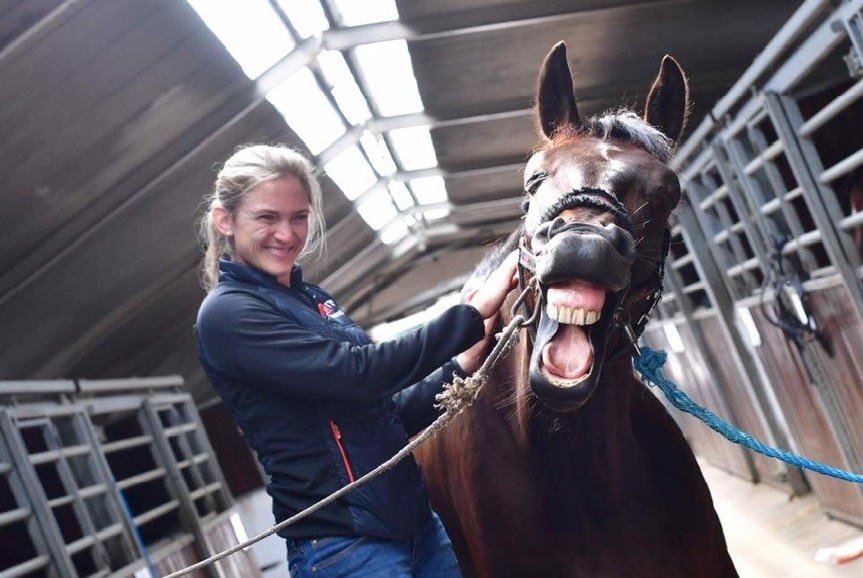Evaluating the Efficiency of Laser Therapy in Horse Treatment for Injury Rehabilitation
The examination of laser treatment's performance in equine injury rehab pivots on multiple elements, including healing time, discomfort reduction, and cells regrowth. Vets often observe exceptional results with laser therapy compared to traditional techniques, placing it as a crucial element in equine care.
Understanding Laser Therapy
Laser therapy has actually come to be a crucial tool in vet medicine, particularly in the treatment of equine problems. Recognized for its non-invasive nature and efficiency, laser therapy includes the application of certain wavelengths of light to boost cells repair and minimize inflammation. This restorative technique is significantly preferred for its ability to speed up the recovery procedure in equines experiencing a variety of musculoskeletal injuries and persistent problems.
The primary mechanism behind laser therapy is its capacity to improve mobile functions. When laser light passes through the skin, it is absorbed by mitochondria, the powerhouse of cells, which results in increased production of adenosine triphosphate (ATP) This biochemical power increase assists in mobile repair work and regeneration. In addition, laser therapy promotes vasodilation, boosting blood flow and oxygen distribution to damaged tissues, hence expediting recuperation.
In equine medicine, laser therapy is specifically beneficial for problems such as tendonitis, osteoarthritis, and injury recovery. The strategy is lauded for its pain-relieving properties, allowing steeds to regain wheelchair and function a lot more quickly. Veterinarians additionally value its very little side impacts compared to various other treatment modalities, making it a dependable and secure choice for equine treatment.

Exactly How Laser Therapy Functions

Upon absorption, these photons trigger a series of biochemical modifications, boosting mitochondrial function and causing increased adenosine triphosphate (ATP) production. This increase in ATP accelerates mobile metabolic process, advertising tissue repair service and regrowth. In addition, laser treatment modulates inflammatory actions by impacting cytokine degrees and decreasing oxidative anxiety, thus minimizing discomfort and swelling.
An additional considerable aspect of laser treatment is its role in boosting microcirculation. The therapy promotes vasodilation, enhancing blood circulation and oxygen distribution to damaged cells (Equine Therapy). This facilitates the removal of mobile debris and sustains the expansion of fibroblasts and collagen synthesis, essential for injury recovery
Scientific Evidence
The efficacy of laser treatment in equine therapy has been confirmed through numerous clinical studies, showcasing its therapeutic prospective throughout a variety of problems. Numerous regulated trials and observational research studies have actually documented substantial improvements in cells repair, pain decrease, and total recovery timelines. For example, a research study performed by Turner et al. (2012) showed that steeds treated with low-level laser treatment (LLLT) for ligament injuries displayed increased healing contrasted to those obtaining conventional treatments. The research highlighted a significant decrease in swelling and enhanced collagen development.
Likewise, research by Johnson and coworkers (2015) concentrated on equine muscle mass injuries, disclosing that laser treatment substantially sped up muscle mass fiber regrowth and minimized muscle rigidity. Medical assessments have revealed that laser treatment can alleviate persistent conditions such as osteoarthritis.
Vet Insights

Veterinarians likewise value the versatility of laser treatment. It can be used for a variety of conditions, from shallow wounds to deeper musculoskeletal injuries. Dr. Emily Brown highlights its utility in treating conditions like tendonitis and osteoarthritis, where standard therapies often fall brief. She aims out that laser treatment can be customized to the particular needs of each equine, guaranteeing optimum end results.
In addition, veterinarians value the capacity to integrate laser treatment with other treatment techniques. This multimodal technique can enhance general treatment efficiency, supplying a thorough remedy for equine recovery. Such recommendations from seasoned professionals emphasize the growing approval and application of laser treatment in equine medication.
Practical Considerations
A key element of executing laser treatment in equine treatment includes comprehending the practical factors to consider that guarantee its effectiveness and safety and security. First and foremost, it is essential to select the appropriate laser device, as various kinds vary in wavelength, power, and infiltration deepness. Equine Therapy. Veterinarians must be well-versed in these criteria to tailor therapy protocols effectively to every injury kind
Additionally, the frequency and duration of laser therapy sessions require careful planning to make the most of restorative advantages while minimizing any type of potential adverse impacts. Consistent tracking of the horse's action to therapy can assist needed modifications in the therapy program. Establishing a risk-free and controlled atmosphere during treatments is additionally necessary to prevent unintentional exposure to laser exhausts, which can damage both the steed and the handler.
Educating and certification of workers carrying out laser therapy are vital to guarantee appropriate strategy and to copyright security criteria. In addition, keeping precise records of each session, including laser setups and observed end results, is vital for assessing the overall effectiveness of the therapy and for making data-driven decisions.
Conclusion
Laser treatment has actually become an effective method in equine injury rehab, offering substantial benefits in recuperation time, discomfort relief, and cells recovery. Clinical studies underscore significant enhancements in problems such as tendonitis and osteo arthritis, associated to boosted mobile function and increased ATP production. Vet monitorings affirm these searchings for, highlighting premium outcomes contrasted to traditional therapies. For optimal results, constant surveillance and personalized treatment protocols stay crucial in find more information leveraging the full capacity of laser treatment in equine treatment.
Comments on “Why Equine Therapy is Coming To Be a Preferred Choice for Emotional Wellness”